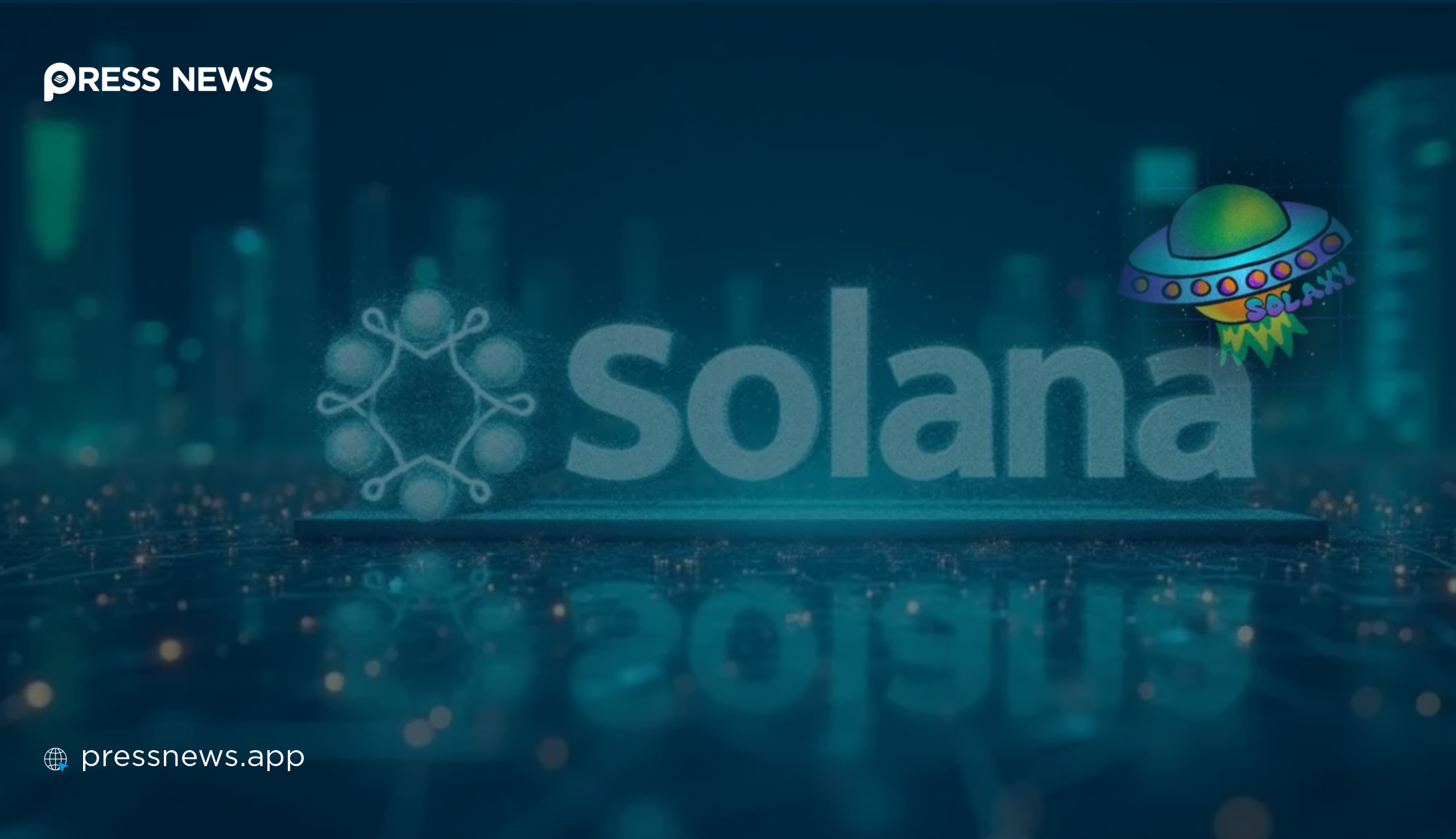Hedera Foundation Partners with The Binary Holdings to Onboard 169 Million+ Users
As Solaxy’s presale winds down, the project has already secured more than $43.8 million, with only days left before the final round closes. Positioned as Solana’s first dedicated Layer-2 chain, Solaxy aims to tackle scalability bottlenecks while harnessing meme-coin buzz and broad multichain compatibility. Yet even as excitement builds around the upcoming token launch, some investors are asking whether $SOLX offers enough beyond hype to deliver sustained gains.
Presale Milestone Marks Turning Point
At a presale price of $0.001744 per token, Solaxy quickly attracted early backers enticed by promises of 92% staking yields and the chance to ride a narrative of “Solana’s next big thing.” “When we opened this round, the feedback was overwhelming,” explains Ashwin Patel, Solaxy’s head of community outreach. “Our goal was to show that Solana could host a purpose-built Layer-2 network, and the market responded immediately.” With nearly $44 million in the coffers, Solaxy will soon transition from fundraising mode into a full launch phase.
That launch is slated for mid-June 2025, when $SOLX is expected to appear on several Tier-1 exchanges. Solaxy’s development team has declined to name specific platforms until listings are finalized, but community moderators hint that at least two major centralized exchanges will provide immediate liquidity on day one. For many presale participants, securing early exchange access is essential; “A strong listing slate can make or break a token’s initial price action,” notes grassroots investor Maya Chen.
Balancing Hype with Real-World Utility
Despite the frenzied rush to buy in, analysts urge caution. “Presales often generate significant hype, but true value depends on what follows,” says Marcus Lee, a blockchain researcher at Digital Frontier Analytics. “Short-term price targets might hover between $0.004 and $0.007, but that assumes Solaxy delivers its roadmap without hiccups.” Lee’s team projects a bullish scenario for late 2025 in the $0.02 to $0.05 range, though he stresses that meaningful exchange liquidity and ecosystem growth will be critical catalysts—or potential stumbling blocks.
From a technical standpoint, Solaxy plans to offer seamless cross-chain support, enabling assets to flow not only across Solana itself but also into Ethereum and other compatible networks. By merging Solana’s high-throughput capabilities with a layer of additional programmability, the project hopes to capture the imagination of both developers and retail traders. Still, naysayers point out that Solana’s ecosystem has already spawned numerous scaling solutions, and the meme coin narrative might not be enough to sustain long-term interest. “You can’t rely on clever marketing forever,” quips on-chain analyst Karim Hassan. “Investors want to see genuine throughput improvements and a growing user base.”
Competition Heats Up: Enter StratoVM
While Solaxy has garnered headlines for its fast-growing presale, a quieter contender is stirring excitement among Bitcoin enthusiasts. StratoVM, an EVM-compatible Layer-2 built on Bitcoin, has recorded explosive growth since going live. Over the past three months, $SVM has surged more than 2,900%, drawing over 113,000 wallets to its testnet and registering more than 56,000 daily transactions.
“In essence, StratoVM gives Bitcoin the same programmability we associate with Ethereum,” explains cofounder Elena Romanov. “That unlocks a new wave of DeFi and AI-driven applications on the chain that’s long been relegated to ‘digital gold’ status.” Unlike Solaxy’s presale-driven approach, StratoVM’s momentum stems from its technical foundation: full EVM compatibility, secure rollups anchored in Bitcoin’s proof-of-work, and partnerships with more than 50 strategic players across exchanges, wallets, and Layer-1 networks.
With a mainnet launch targeted for Q3 2025, StratoVM already allows users to swap $SVM on Uniswap, and several large DeFi projects have begun integrating its testnet for cross-chain experiments. According to data from DeFiLlama, total value locked (TVL) in Bitcoin-based DeFi protocols has rocketed from $307 million to $6.6 billion over the past year—clear evidence that “BTCFi” is no longer a fringe concept. “We’re seeing whales reposition capital toward foundational Bitcoin infrastructure rather than chasing meme tokens,” Romanov adds. “StratoVM’s stealth approach lets the technology speak for itself.”
Meme Appeal Versus Infrastructure Depth
For many crypto observers, the current landscape illustrates a broader shift. Solaxy’s model leans heavily into meme coin virality—complete with playful branding and lighthearted community events—while promising robust staking yields. “There’s nothing wrong with a bit of fun,” says investor Maya Chen, “but you still need genuine use cases to underpin the token’s value in year two and beyond.”
In contrast, StratoVM emphasizes core infrastructure: granting smart contract functionality to the world’s most secure blockchain. As Chen points out, “When Bitcoin can host DeFi primitives and automated AI agents just like Ethereum, you open the door to real-world financial applications—loans, derivatives, yield strategies—that have traditionally been trapped on other chains.” For Solaxy to remain competitive, many believe it must demonstrate tangible throughput improvements, a vibrant ecosystem of dApps, and meaningful contributions to Solana’s broader roadmap.
Looking Ahead: Two Paths, One Goal
With Solaxy’s presale nearing its final stage, participants face a critical decision: ride the wave of short-term enthusiasm or wait to see if the project can deliver on its lofty promises. If $SOLX lists on major exchanges with ample liquidity, early buyers could realize significant gains during the first weeks of trading. Yet if network adoption falters, the token risks being overshadowed by newer infrastructure plays.
Meanwhile, StratoVM is quietly carving out a space for itself as the premier gateway to Bitcoin-powered DeFi. “Our partnership roster is growing every week,” says Romanov. “We believe that unlocking smart contracts on Bitcoin is the next logical step in crypto’s evolution.” With a mainnet launch in sight and testnet metrics climbing steadily, StratoVM may well become the standard-bearer for Bitcoin’s DeFi era.
For now, Solaxy’s checklist is clear: finalize the code audit, secure Tier-1 exchange listings, and build a passionate developer community before the market’s attention shifts elsewhere. As of this writing, the presale stands at $44 million—and ticking upward. “We’ve seen tremendous community support so far,” says Solaxy’s Patel, “but the real work begins now. We need to prove that our Layer-2 can move the needle for Solana developers and end users alike.”
Final Considerations
At the intersection of hype and substance, Solaxy and StratoVM epitomize two contrasting approaches to Web3 growth. Solaxy leverages meme culture, rapid fundraising, and eye-catching staking yields to generate buzz. StratoVM, by comparison, anchors its reputation in technical rigor and genuine Bitcoin integration. If Solaxy can back up its claims with real performance—measured in transactions per second, user sign-ups, and developer activity—it may secure a lasting position in the Solana ecosystem. Otherwise, infrastructure projects like StratoVM risk capturing the imagination of investors seeking foundational, long-term value.
As both tokens prepare for their respective launches, the broader crypto community watches closely. Will Solaxy ride the wave of Solana’s popularity into sustainable success? Or will StratoVM’s quiet confidence continue to draw users to Bitcoin’s newly minted DeFi frontier? The coming weeks should provide a definitive answer.
Disclaimer: This article is for informational purposes only and does not constitute financial or investment advice. Cryptocurrency investments carry significant risk, and past performance is not indicative of future results. Always conduct your own research before making any investment decisions.


 Press Labs Inc.
Press Labs Inc. 








